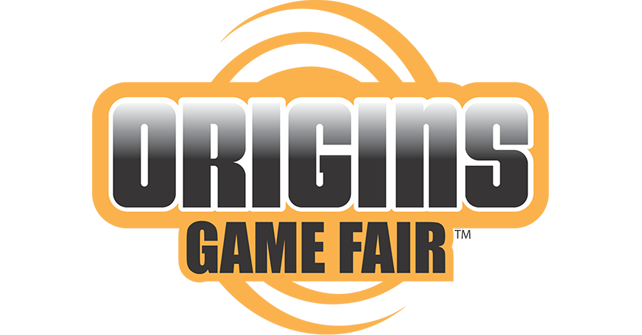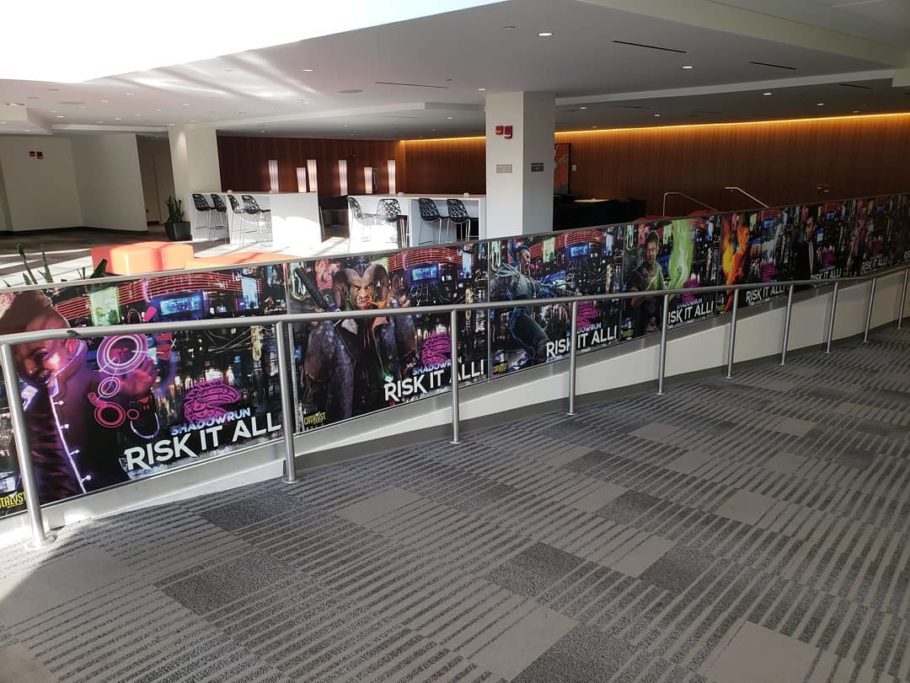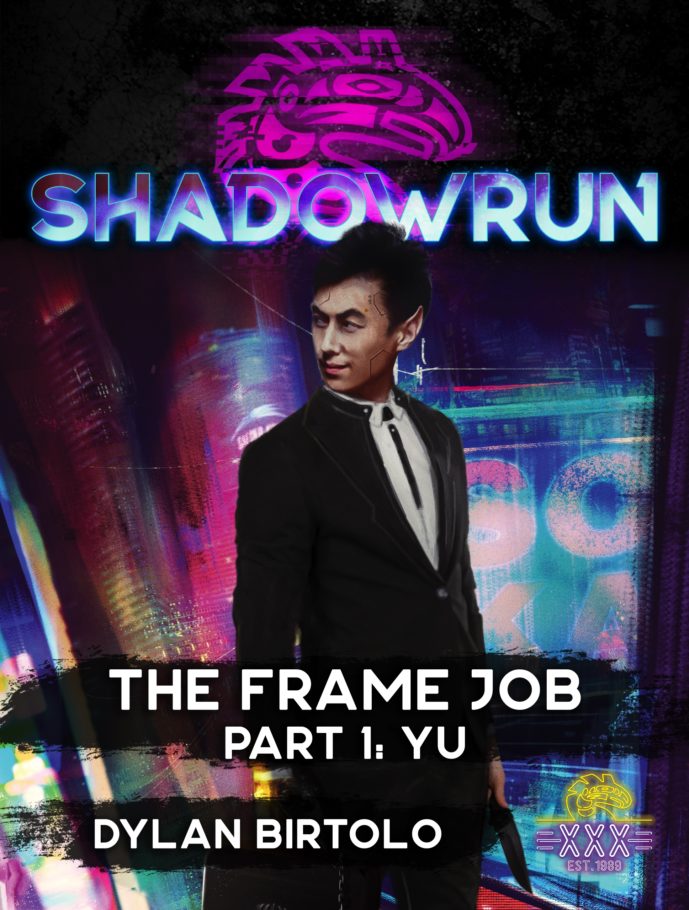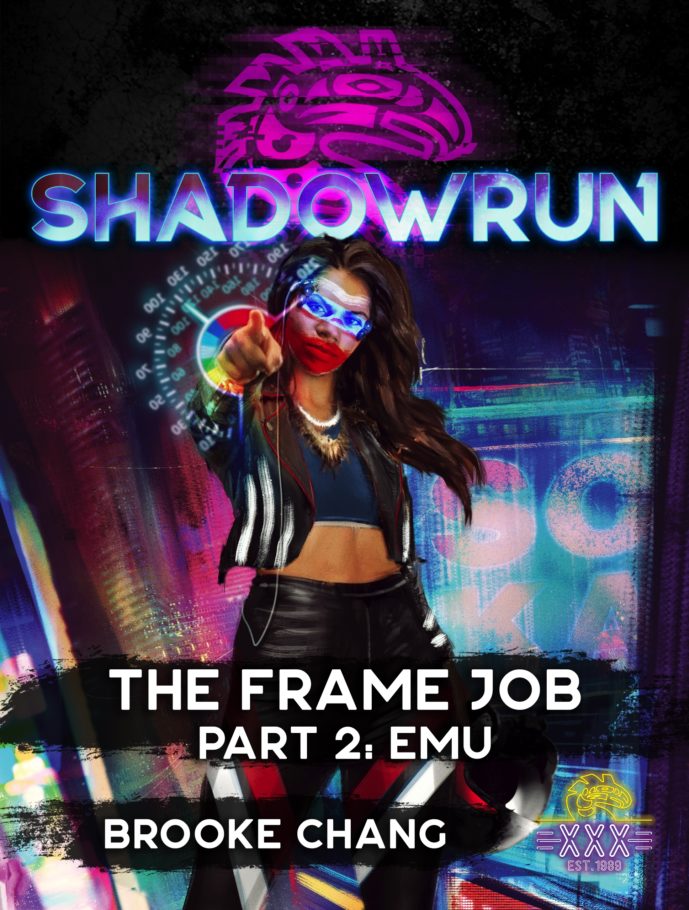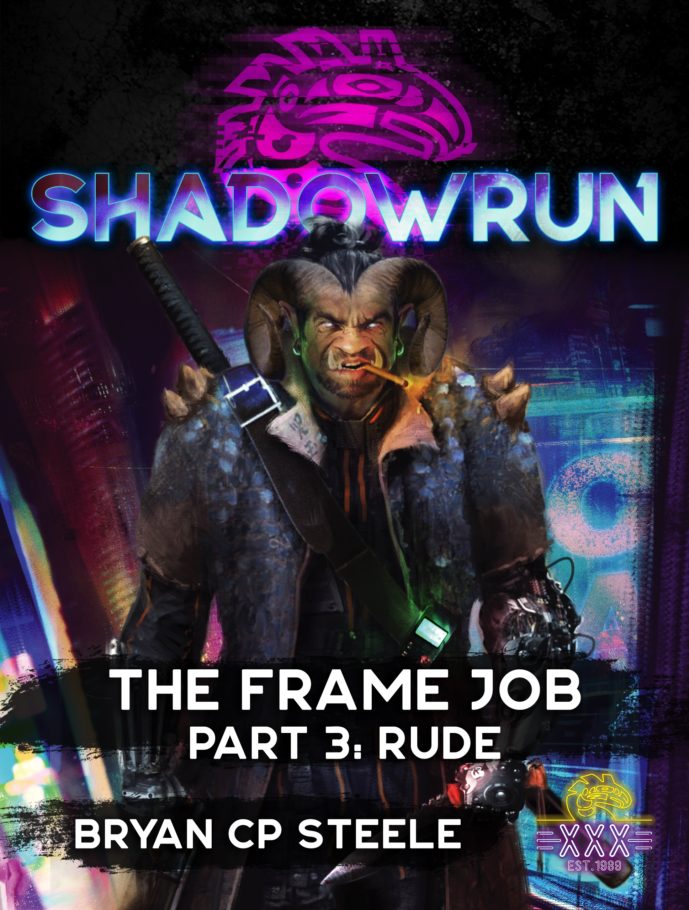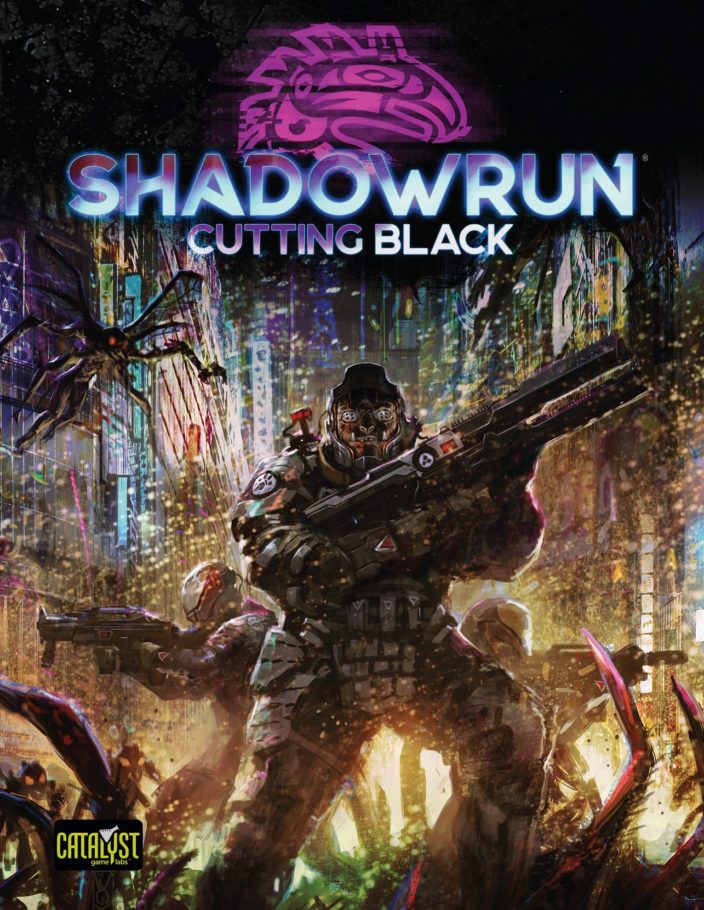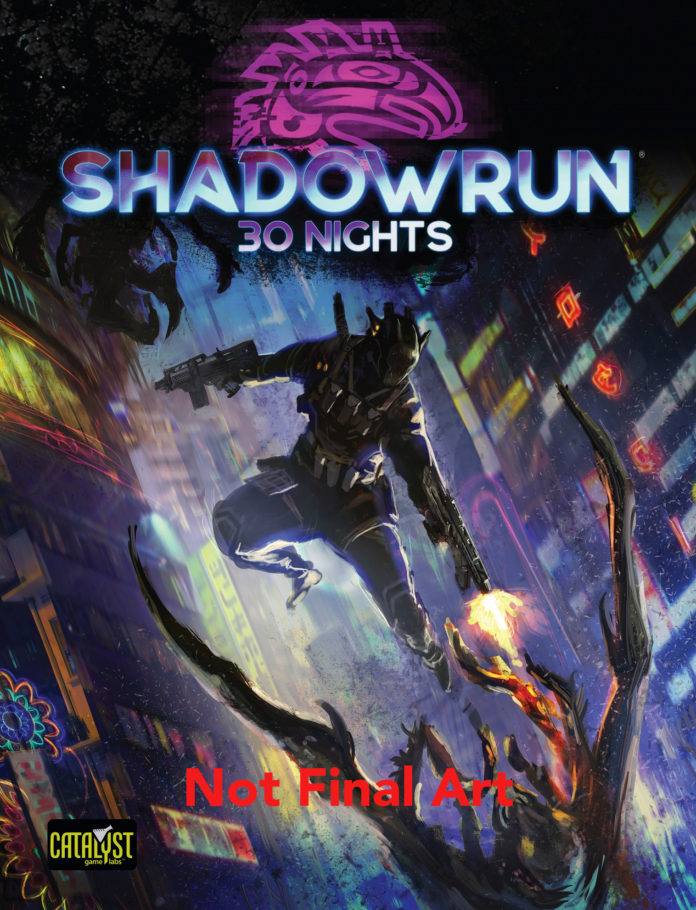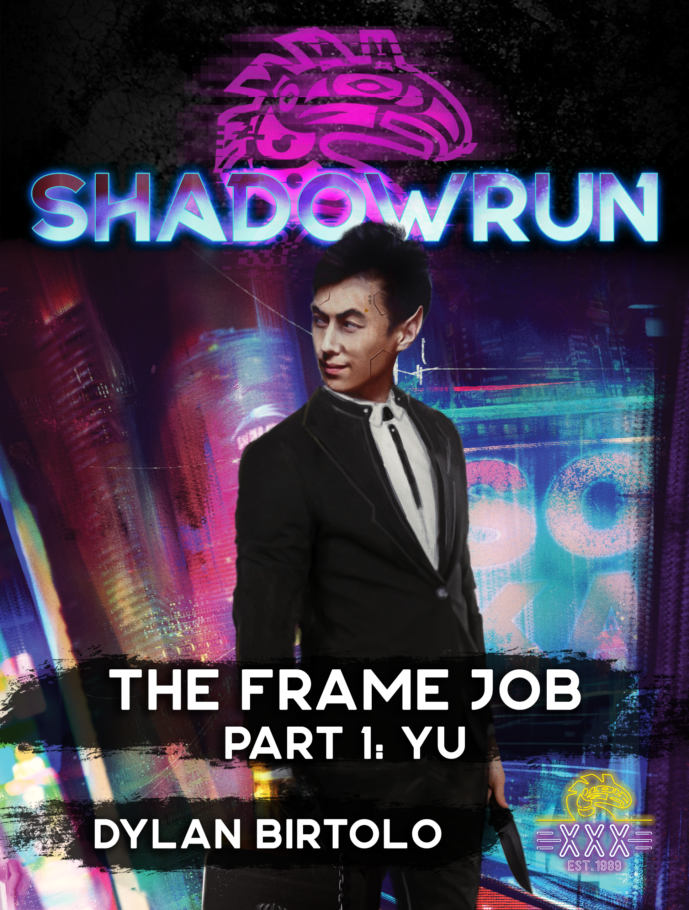Welcome to
this week’s Shadowrun, Sixth World update! For this week’s post, we’ve
scoured various internet outposts to find some common questions about Sixth World, and asked Jason Hardy, Shadowrun
line developer, to answer.
Is Sixth World an attempt to simply fix the problems that some saw in Fifth Edition, or is it more of a ground-up re-envisioning of the Shadowrun game as a whole?
Definitely
closer to the latter. I wouldn’t say it’s a total re-envisioning—we
still have dice pools of D6s, we have the same attributes, and many aspects are
the same as previous editions. But we did not want to simply tweak or adjust Fifth
Edition–we wanted this to be a whole new edition, with new concepts and a
different feel. We also wanted to streamline the game—which is the subject of
the next question!
In streamlining the Sixth World rules, did the developers take any cues from other game systems and their recent editions on what to do or not do?
Short
answer: Yes. Longer answer: I play games a lot, so I’m always looking at
lessons to learn from other games. In particular, I looked at a lot of ways of
making adjustment to dice and dice pools, to see how the math on each of those
work out. Adjusting threshold numbers, adding more dice, adding +1 to a die,
re-rolling a die—all of those have different effects, and knowing what those
effects are was important in designing the game (I have a lovely spreadsheet
with fun stats!).
I also
looked at one element crucial to role-playing games, and that is giving a range
of characters meaningful choices. Without going into details, I’ve seen games
that do a great job of it, and I’ve seen games where some types of characters
seem to only be able to choose from a small range of actions, so they end up
picking between one or two alternatives most of the time. We tried to emulate
the former!
Who did the developers turn to for input on revising the rules for Sixth World? How was the system playtested and what tweaks were made as a result?
Lots of
people! The initial phase of development was more of a reaching-out phase—we
spoke with people who weren’t in the trenches of day-to-day Shadowrun work
to get their thoughts on different ways Shadowrun could reinvent itself,
so that we could get fresh ideas. We also reached out to freelancers working on
Shadowrun, especially those with lots of in-the-trenches gaming
experience.
Playtesting
went through several phases (fun fact: the core playtest document was updated
and re-circulated 12 different times during the playtest process). Throughout
the process, I ran games with a variety of people—Catalyst staff, experienced Shadowrun
players, and people new to Shadowrun. The freelancers working on Shadowrun
ran several playtests as we were in the early stages of forming the main
structure of the game.
Once we had
a basic structure in place, the playtest broadened. We have a large group of
non-staff, non-freelancer playtesters we use for a lot of different games, and many
of them stepped in to run games. This gave us the perspective of people coming
to the ruleset with fresh eyes, having not been involved in any of the early
development of this game or in any writing of SR5 rules.
The changes
from this process are numerous. A few examples:
* The very
first set of playtest rules had a lot of what is now part of the Edge in a
separate sub-system. Playtesters thought it would be good to combine all the
systems into Edge. That was a good idea.
* There were
many playtest ideas on ways to reconfigure skills to make them easier to handle
while also providing ways to make a range of characters. The Specialization and
Expertise system came out of that.
* Early
playtest documents focused on the Combat uses of Edge. The intention was always
to expand it, but that was given special urgency by playtesters emphasizing
that Edge needed to be woven into multiple areas of gameplay.
*
Playtesting is also good for making small tweaks—damage values, Karma costs of
qualities, drain values of spells, and more were adjusted in playtesting.
How long will it take for the various sourcebooks for all the character classes to come out? Will I have to “downgrade” my character to what’s available in the core rules until those books are available?
The combat
sourcebook will come out by the end of this year. As with Fifth Edition,
the other core books will then come out regularly as they are developed and
written. We will have a character conversion guide that will help with bringing
a character into the new edition, but we simply cannot put put rules that
covered more than 2,000 pages in Fifth Edition in a single burst,
especially since the last books developed for Fifth Edition haven’t come
out yet, so I was working on them while also working on Sixth World. Getting all the core books out in a
single year would require at least a year where I wasn’t working on anything
else, and that’s not something I can do!
When will Missions change over to using Sixth World rules, and will my character have to be reset to use only what’s in the core book?
If all works
the way we have planned, the first Neo-Tokyo Missions will be dual-statted for
both Fifth Edition and Sixth World. We hope those will start flowing out this fall. That means you
should have at least half a year before having to make the conversion to Sixth
World to play Missions. If the dual-statting goes smoothly, we can explore
extending it.
Have you made any changes to riggers, their rules, or how they’re incorporated in runs? Will rules for riggers come earlier in the release schedule than in the past?
Yes. Vehicle
stats are greatly changed—in some ways, they’re one of the ways the rules
became a bit more complicated, if only so vehicle movement could be tracked
without the abstracted chase rules of previous editions. Matrix rules have been
changed, so with them rigging rules have been adjusted, though that level of
detail is beyond the scope of this post! Between drone rigging, vehicle operation,
and taking over other vehicles and drones, riggers should find plenty to do.
The timing
for the rigger book and other books has not been decided yet, though I’ll just
take this opportunity to point out that Rigger 5.0 came out more than
three years ago, less than halfway through the Fifth Edition cycle!
What would you say to those who are concerned about the reduced number of Skills in Sixth World?
First, the
goal of specializations and expertise is to give players a way to differentiate
characters with this smaller skill set. I hope that will be useful and give
characters their own feel. Second, if, in the end, you prefer the longer skill
list of previous editions to the list in Sixth
World, that’s okay. I long
ago came to grips with the fact that no single edition of Shadowrun will
be everything to everyone. Everyone will like the things they like, and I just
hope Sixth World provides rules and tools a substantial group of players
can use to have fun!
Can you talk a little more about Edge, and why Sixth Edition changes how it is used?
The process
of how Edge evolved is the longest, most detailed process in the whole game. So
I’ll try to make a long story short! Ish. So, the first thing I focused on when
it came time to move past brainstorming and put rules to paper was combat. I
wanted the whole combat process to move smoother and for combat to resolve
faster. I saw a lot of things to tweak the process, but in the end, many of
them boiled down to one thing: It takes a long time to calculate dice pools.
Modifiers can come from a lot of places, and remembering to look at all these
places, while also remembering the size of the modifiers, can be complex. I
wanted to streamline that whole process. The first step in that was combining a
lot of weapon stats into a single number called Attack Rating. That number is compared
to a Target’s Defense Rating, and, in the initial system, if your Attack Rating
was sufficiently higher than the Defense Rating, you’d get what was called a
Chip, which would represent your accumulated advantage in the fight. The idea
was that other things, such as good tactical execution, would give you more Chips.
Then playtesting showed us that the Chip system had similarities with Edge, and
things would work best if Edge was expanded, rather than introducing a new meta-game
currency. Once that merger was in place, the work was to find how to implement
Edge across the system. So deckers, faces, riggers, technomancers, and whoever
else hits the shadows gets a chance to build up Edge and spend it in a
spectacular move.
How did you balance the need to streamline the core rules against the complexity and detail that many Shadowrun players enjoy?
That was a tough one! In the end, I think it’s about making a good framework for the game. The basics of Shadowrun are simple—find a skill for the action you’re going to attempt, add ranks in that skill to ranks in an associated attribute, roll that many D6s, and count how many 5s and 6s you get. You’re either trying to beat a threshold established by the gamemaster or the number of hits from another character. That part isn’t hard to master. The complications come with all the attachments, which means that in the end, it’s about not overloading the core system with attachments. The way Edge works in Sixth World gives players plenty of opportunities for their choices to have and effect in the game while making it easier to determine what that effect is.
Why should an established Shadowrun player pick up Sixth World?
For the
adventure and challenge! Game rules offer structure and limits, with the
players seeing what cool things they can pull off within that structure. Just
like designing a new character, new rules give you a chance to see what you can
make happen with new trappings. In Sixth World, combat should move
faster, and your opportunities to do spectacular things should come about more
frequently. You also might have an easier time getting people who found the
longer Fifth Edition book too daunting into the game!


